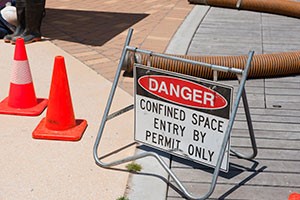Six Ways to Increase Safety in Confined Spaces

Confined space operations are always high risk. Workers who enter tanks, silos, storage bins, ductwork, tunnels, and maintenance holes may face toxic fumes, reduced oxygen levels, and explosive atmospheres. According to the Bureau of Labor Statistics (BLS), an average of 92 people die in confined space work-related incidents yearly. Proper knowledge, air sampling technology, and personal protective equipment (PPE) raise safety levels and help decrease the alarming number of fatalities.
The Occupational Safety and Health Administration (OSHA) provides these six tips for working in confined spaces:
- Complete a hazard assessment that considers the potential types of atmospheres, physical hazards, and temperature extremes employees may face as they enter and exit a confined space.
- Monitor the confined space before and during entry. Test or monitor the space as necessary to determine if acceptable entry conditions are being maintained during operations.
- Remove any hazards from the space. This can include the lockout/tagout of equipment, procedures for purging, and/or ventilating and flushing the confined space.
- Account for any hazards you may be bringing in, such as tools or other equipment. You must verify that conditions in the confined space are acceptable for entry throughout the operation.
- Have trained rescue personnel standing by onsite. Ensure that your rescue team can reach the victim(s) within an appropriate time frame, and has the necessary equipment to perform a rescue. You must inform each rescue team or service of the hazards they may confront, and provide them with access to all spaces from which rescue may be necessary.
- Use a mechanical means of rescue, such as a tripod and hoist. To facilitate non-entry rescue, retrieval systems or methods should be used whenever an authorized entrant enters a confined space, unless the retrieval equipment would increase the overall risk of entry or would not contribute to the rescue of the entrant.
Although there are many hazards of working in confined spaces, most of the deaths reported each year are preventable. Providing adequate training and safety equipment to your employees is critical in protecting them and ensuring they implement safe work practices on the jobsite. To learn more, check out this link.



